The most effective lenses for astrophotography help you shoot the night sky and stars significantly more simply. Best telephoto lens for astrophotography 2022. If you’ve attempted to photograph the night sky using an astrophotography kit lens with an in-between and slow maximum aperture, you’ll be able to appreciate how difficult it can be when working on an incredibly clear night.
We’ve created this list of top lenses for shooting astrophotography. What makes an excellent lens for photographing at the Milky Way? It is recommended to use the wide-angle zoom or a prime. You should use a focal range of 14-20mm, in terms of 35mm equivalent (so around 10-14mm with micro Four Thirds-based cameras). However, this is just one aspect that you need to have an aperture of a large size for light-gathering reasons since excessively high an ISO setting can cause the grain to a high level and make the stars difficult to read.
Top 5 Best Telephoto Lens For Astrophotography
Choosing the best telephoto lenses for astrophotography should be an important decision, as you are investing a significant amount of your money in them. A great lens can help you capture remarkable night sky photographs. But it’s hard to define, which one is the best among hundreds of lenses available on the market. That’s why we have compiled specified reviews and ratings of a few of the most popular astrophotography telephoto lenses that are currently available on the market.
1. Sigma 14-24mm F2.8 – Best Budget Wide Angle Lens
Main Features:
- SA-Mount Lens/Full-Frame Format
- Aperture Range: f/2.8 to f/22
- Three FLD Elements, Three SLD Elements
- Three Aspherical Elements
- Super Multi-Layer Coating
- Hyper Sonic Motor AF System
- Rounded 9-Blade Diaphragm
- Built-In Lens Hood
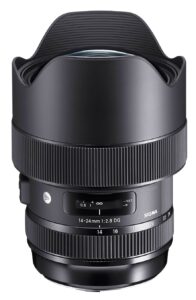
With a variety of focal lengths for wide-angles with a strikingly bright and attractive design This lens Sigma SA-mount Sigma 14-24mm f/2.8 DG HSM is an Art-series zoom that is distinguished by its quick f/2.8 fixed maximum aperture that can be used in any lighting conditions. It features a sophisticated aesthetic, optical layout, this lens employs an array of aspherical and low dispersion elements to reduce both spherical and chromatic distortions throughout the zoom range to attain high clarity quality, clarity, and color precision. The Super Multi-Layer Coating can also help to reduce ghosting and flare for accurate, high contrast images in various lighting conditions.
2. Tokina AT-X 11-20mm f2.8 PRO DX Lens – Best Cheap Lens For Astrophotography
Main Features:
- EF-Mount Lens/APS-C Format
- 17.5-32mm (35mm Equivalent)
- Aperture Range: f/2.8 to f/22
- P-MO & Glass-Molded Aspherical Elements
- Three SD Ultra-Low Dispersion Elements
- Multi-Layer Lens Coatings
- Internal Focus; One-Touch Focus Clutch
- Nine-Blade Diaphragm
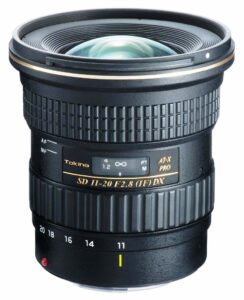
A wide-angle lens that can be used in a variety of ways for Canon APS-C format DSLRs, the ATX 11-20mm f/2.8 PRO DX Lens by Tokina provides a 17.5-32mm equivalent length of focal range. It also comes with a continuous f/2.8 maximum aperture that ensures brightness across the entire zoom range. One hybrid P-MO aspherical element along with two glass-molded elements combine to minimize distortions and to control different aberrations. Three SD ultra-low dispersion elements minimize the appearance of chromatic aberrations, resulting in better clarity. The multi-layer coating on lenses also has been added to enhance the overall light transmission and accuracy of color by reducing ghosting and lens flare.
3. Canon EF 16-35mm Lens – Canon 16-35 F2.8 iii Review
Main Features:
- EF-Mount Lens/Full-Frame Format
- Aperture Range: f/2.8 to f/22
- Three Aspherical and Two UD Elements
- SWC, Air Sphere, and Fluorine Coatings
- Ring-Type Ultrasonic Motor AF System
- Weather-Sealed Construction
- Rounded 9-Blade Diaphragm

With a new optical design, The EF 16-35mm f/2.8L III USM from Canon is a classic wide-angle zoom and a member of the highly regarded L-series lenses. It features a range of specialized components, the lens uses an assortment of aspherical elements as well as two Ultra-low Dispersion glass elements that reduce a variety of aberrations to ensure superior clarity and sharpness. It also has SWC along with ASC coatings that have been applied to the lenses to decrease the ghosting and flare of the lens to increase the quality and clarity of color.
4. Nikon AF-S NIKKOR 14-24mm f2.8G – Best Zoom Lens for Astrophotography
Main Features:
- F-Mount Lens/FX Format
- Aperture Range: f/2.8 to f/22
- Three Aspherical and Two ED Elements
- Nano Crystal Coat
- Silent Wave Motor AF System
- Internal Focus; Manual Focus Override
- Built-In Petal-Style Lens Hood
- Rounded 9-Blade Diaphragm
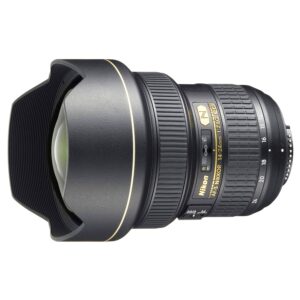
The broadest among Nikon’s f/2.8 zooms, the AF 14-24mm f/2.8G is a flexible ultra-wide-angle focal length range that is ideal for nature, landscape, as well as interior photos. In addition to its wide perspective, it is distinguished through its f/2.8 fixed maximum aperture that ensures constant performance and brightness across the zoom range. The optical design includes three aspherical elements, and two elements with low dispersion, which significantly reduce aberrations and distortions, resulting in the highest level of clarity, sharpness, and precise rendering. The Nano Crystal Coat has also been used to reduce ghosting and flare for better clarity and contrast even in difficult lighting conditions and backlit environments.
5. Samyang 135mm f2.0 – Best Telephoto Lens For Astrophotography
Main Features:
- X Mount Lens/APS-C Format
- 202.5mm (35mm Equivalent)
- Aperture Range: f/2.0 to 22
- One Extra-Low Dispersion Element
- Ultra Multi-Coating
- Manual Focus; Manual Aperture Ring
- Minimum Focus Distance: 2.6′
- Filter Thread Diameter: 77mm
- Removable Lens Hood
- Rounded 9-Blade Diaphragm
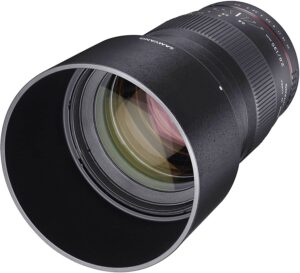
Use low-light conditions and take photos with stunning “bokeh” with the 135mm f/2.0 ED UMC Lens from Samyang which is available here to Fujifilm X mount cameras with APS-C sensors. This all-manual telephoto lens has a flattering angle that is suitable for portraits as well as other subject matter that is sensitive as well as the quick f/2.0 maximum aperture ensures that your image is bright and features a remarkably low depth of field. Additionally, this lens comes with one element with low dispersion to minimize the effect of chromatic aberrations on the final image, as and an Ultra Multi-Coating for reducing ghosting and flare.
Frequently Ask Question(FAQ)
Q. Are telephoto lenses good for astrophotography?
These lenses are higher-end for the advanced astrophotographer and are certainly much more expensive, however, they are amazing astrographs and can be used wide-open at f/2.8 for breathtaking images of massive nebulae, such as those of the North America Nebula and Lagoon and Trifid Nebulae.
Q. What is the best size lens for astrophotography?
The majority of every 50mm lens is a great option for astrophotography, including the less expensive f/1.8 versions. This Canon RF 24-70mm f/2.8L IS USM lens is an excellent lens for photographers using mirrorless.
Q. What focal length is best for deep sky astrophotography?
Long focal-length astrophotography with deep-sky features (starting around 2,000 mm) is best performed from space or once you’ve mastered the steep learning curve.
Q. Is 20mm good for astrophotography?
A wide-angle lens with an aperture that is fast could be suitable for this amazing genre, and the location where I reside provides plenty of chances to capture images of the Milky Way (when the weather allows). The 20mm 1.8 did not disappoint.
Q. What lens is best for moon shots?
It is essential to locate lenses with a focal length of at least 300mm. Fortunately, the moon is so bright it is not necessary to use expensive zoom lenses. Any lens with openings of f/5.6 or f/8 is sufficient. For the best DSLR, we suggest using the Canon EF 75-300mm f/4-5.6 or Canon EF 100-400mm f/4.5-5.6L IS USM
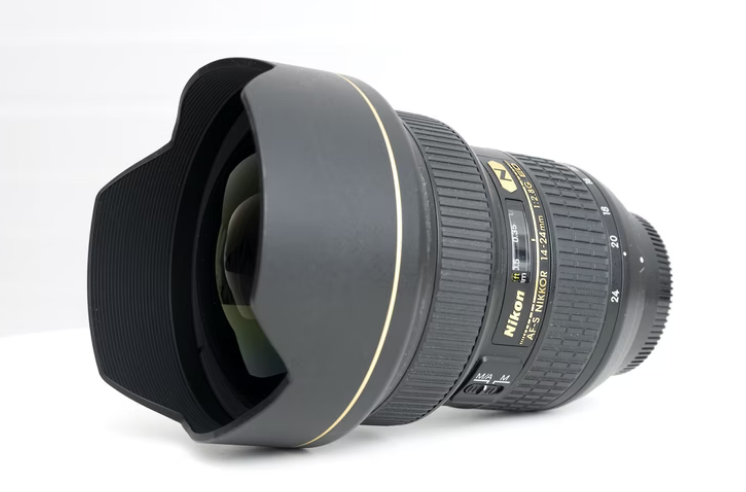
2 thoughts on “5 Best Telephoto Lens For Astrophotography”